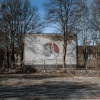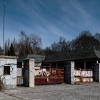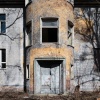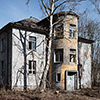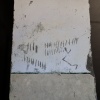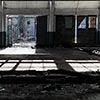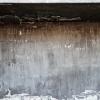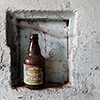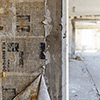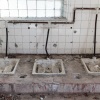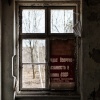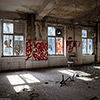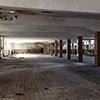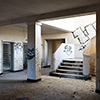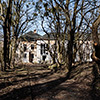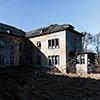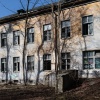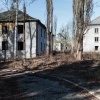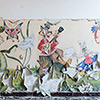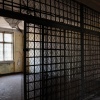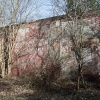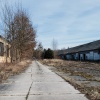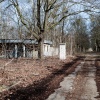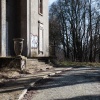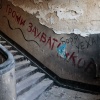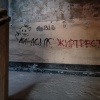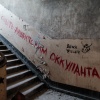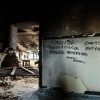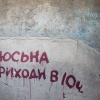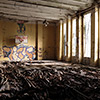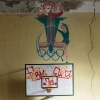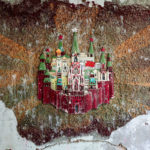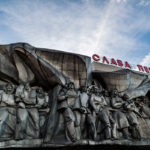East Germany’s Soviet Heritage – Krampnitz’ Tanks at the Gates of Berlin
Krampnitz near Potsdam, at the doorstep of Berlin, was a big military base of the tank troops of former GSFG, the Group of Soviet Forces in Germany. More and more abandoned witnesses like Krampnitz disappear as they get reconquered by nature again or humans level everything to the ground. Krampnitz will face that destiny as well, but unlike other military camps it got perpetuated by Hollywood movie “Enemy at the Gates”.
Military bases actually always encounter the same fate somehow, that is someone leaves but someone new comes. The base in Krampnitz got built in 1937 by the Nazis as an academy for mounted and motorised troops. After WWII has ended the base got captured by Soviet Red Army in 1945 and served as home to tank troops.
As part of denazification the Russians actually removed any optical reminiscence to Third Reich but in terms of Krampnitz an original Nazi eagle swastika emblem surprisingly survived the whole time of Soviet occupation. It was kind of buried under the plaster of the ceiling of culture palace next to main entrance. In the last days of WWII Krampnitz even served as base to Germany’s High Command of the Armed Forces before it moved to Plön and finally Flensburg.
Some sources claim that more than 30.000 people under arms, a whole division, did their service in Krampnitz. When having a closer look at the buildings on the Krampnitz premises it appears more realistic that between 5000 and 6000 people lived here though. Since 1992 those men and women are back in their home country.
When approaching the military barracks complex coming from northeast via federal road B2 then you’ll quickly notice the eye catching mural at the backside of the sports hall next to main gate, a marvellous piece of typical Soviet iconography. In that part of the barracks complex also most of accommodation for the troops can be found. In its rear part on the other hands all buildings and shelters for tanks and other vehicles are located.
Krampnitz‘ military training area is kind of alive though as after the Russians the Germans turned up again, this time painted as Bundeswehr that is still using Döberitzer Heide as a ground to practise military tank exercises. The past years meant back and forth to Krampnitz as property questions came up. The city of Potsdam now turns the whole area into a new suburb for families. Signs mounted at the camp walls already herald of near construction works.
The rear part in the western part of the Krampnitz barracks was stage of the Paramount Pictures movie “Enemy at the Gates”, a Hollywood drama featuring the battle of Stalingrad in reference to the life of Russian sniper Vasily Grigoryevich Zaitsev. Plenty of the red Cyrillic writings on the walls around look great, but are in the end nothing but the movie’s backdrop, hence not really authentic. With a budget of 180 Deutsche Mark “Enemy at the Gates” held the record of being the most expensive film shot in Europe for long time. Before entering Krampnitz I didn’t know that, hence I was a little shocked about the stinging Russian slogans (death to Germans). My Russian photographer friend Victor Boyko quickly noticed that this is all artificial.
That Hollywood sniper drama also made us of another backdrop I know very well: the Rüdersdorf-based Schachtofenbatterie; something that wouldn’t exist without my grandpa’s commitment as the Communists were up to demolish this industrial monument. As young Rüdersdorfer I remember black smoke often emerging from that area, what locals commented drily with a “they shoot a Stalingrad movie again”. Another movie having been filmed in Krampnitz was Helge Schneider’s “Mein Führer”. The barracks served as backdrop for the New Chancellery of the Reich.
Some of the wall scribblings and writings are real though as they don’t state “Stalingrad was, is and will ever be Soviet!” but say “Good Bye Potsdam!” having a chalk painted tank shooting a dove of peace in the sky beside it. Also the walls in the basements of almost every troop accommodation building bear engraved Cyrillic signs telling the city where the soldiers once came from, for example Tashkent, Samarkand or Krasnodar.
